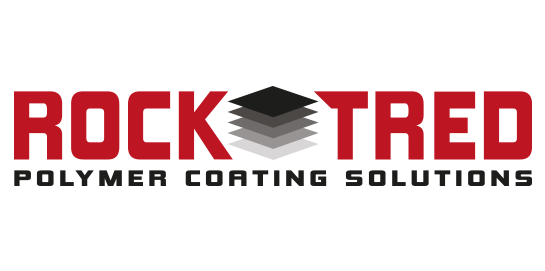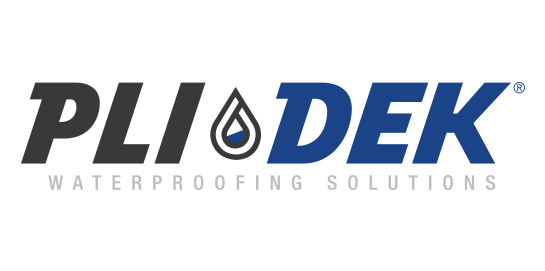

Concrete pavers are often mass produced in factories. The two main types of paver owe their name to their manufacturing processes. Wet cast pavers are formed by pouring wet concrete mixtures into a mould. The mould is placed on a vibrating table which settles the concrete, ensuring the mixture is evenly distributed and free of air pockets. The pavers are then stored in curing chambers to speed up the hydration process. To create dry-pressed concrete, a mixture with minimal water is first poured into a mould. The concrete is then consolidated using a hydraulic press. This removes any excess water from the mixture. Once compressed, the pavers are dry to touch and already quite hard. The concrete is removed from the mould and placed in specially designed chamber which accelerates curing from 28 days to 2.
Concrete pavers are a common choice of material for large outdoor areas where the surface will be subject to weathering and high levels of traffic. Concrete’s lifespan, cost and workability make it a suitable choice for areas such as footpaths, driveways and large courtyards.
Typical Uses of Concrete Paving
Outdoor:
Patios and other outdoor areas: Concrete patios are generally made up of wet cast pavers as they are cheaper to produce. This makes them ideal for residential use as they are an economic flooring option.
Footpaths: Concrete pavers are used for pedestrian footpaths because they are long lasting and inexpensive to construct making it a cost-effective material for public projects.
Driveways: Concrete pavers are durable and relatively cheap to produce. This makes it an economical material which is why it is often selected for driveways for homes and commercial premises.

Common Problems of Concrete Pavers
Efflorescence
 Concrete paving that is located outdoors can be susceptible to a condition known as efflorescence. It is caused by water moving through the substrate of a material collecting and carrying minerals and salts found in the mortar bed, grout, soil or the stone itself. When the impure water reaches the surface of a material and evaporates, the minerals and salts will be left behind. Through a reaction with carbon dioxide in the air, these form those white marks commonly seen on unprotected porous surfaces.
Concrete paving that is located outdoors can be susceptible to a condition known as efflorescence. It is caused by water moving through the substrate of a material collecting and carrying minerals and salts found in the mortar bed, grout, soil or the stone itself. When the impure water reaches the surface of a material and evaporates, the minerals and salts will be left behind. Through a reaction with carbon dioxide in the air, these form those white marks commonly seen on unprotected porous surfaces.
If detected early, efflorescence can be removed using a metal brush. Time is essential, the longer efflorescence is left to cure the more difficult it will be to remove. However, the best treatment for efflorescence is prevention. STAIN-PROOF® Premium Impregnating Sealer, formerly known as STAIN-PROOF Original™, provides permanent water and oil repellency. The sealer deeply penetrates into the pores of a material, permanently bonding through a chemical reaction. This creates a water-repelling barrier which stops water ingress. The pores of the material are not blocked so moisture trapped in the substrate can escape as vapour, preventing the salts and minerals reaching the surface.
Stains
Although different types of concrete may range in porosity any stain left on the surface will eventually be absorbed into the material.
STAIN-PROOF has a number of products that can protect against staining and remove those difficult deep stains.
- Premium Impregnating Sealer provides superior water and oil repellency, which will help prevent staining from food and liquid spills on all concrete surfaces. The invisible, impregnating sealer permanently bonds to the pores of concrete through a chemical reaction. This means a treated surface will not be affected by traffic, exposure to UV radiation or commercial cleaning processes.
- STAIN-PROOF Alkaline Cleaner, formerly known as OXY-KLENSA™, is perfectly suited for removing stubborn stains. The powerful, oxygen based cleaner can be made into a closed poultice which can remove stains that have had time to sink into dense stones such as granite. Refer to our maintenance guide for how to apply a closed poultice to a stain.
Protecting your concrete paving
For protection against stains, efflorescence and the enhancement of concrete surfaces:
For natural look:
Premium Impregnating Sealer - 2 coats
For protection against water and oil-based stains and efflorescence we recommend using STAIN-PROOF Premium Impregnating Sealer, formerly known as STAIN-PROOF ORIGINAL™. The sealer’s deep penetration into the pores of your material will provide superior water and oil repellency. This will stop food and liquid spills from causing permanent staining and significantly reduce the formation of efflorescence. Premium Impregnating Sealer creates a chemical bond inside the pores, permanently becoming part of your material.
Waterborne Dense Stone Sealer - 1 coat
For indoor applications, we recommend using STAIN-PROOF Waterborne Dense Stone Sealer, formerly known as META CREME™, for protection against water and oil-based stains and efflorescence. The ultra-low VOC sealer chemically bonds to the lining of a material’s pore structure, providing permanent protection. Waterborne Dense Stone Sealer deeply penetrates into the pores which creates an excellent water and oil repelling barrier. This sealer is easier to apply, requiring only 1 coat, and is suitable for smooth surfaces.
For non-permanent, natural look, solution:
Waterbased Penetrating Sealer - 1 coat
For protection against water and oil-based stains we recommend using STAIN-PROOF Waterbased Penetrating Sealer, formerly known as STAIN REPELLA™. This will stop food and liquid spills from causing permanent staining.
For enhanced look:
Paver Enhancing Sealer - 1 or 2 coats
For color enhancement of man-made surfaces, we recommend Paver Enhancing Sealer.Paver Enhancing Sealer offers both rich color enhancement and water and liquid protection through a patented combination of silicone technology.
Maintaining your concrete paving
For everyday and heavy-duty cleaning of your concrete paving:
Maintenance is an important part of owning a natural stone or other hard porous surface. Being diligent about the condition of your surface can minimize the need for regular, heavy-duty cleaning. There are a few simple actions that can be taken such as:
- Wiping up spills as soon as possible.
- Regularly washing down areas such as pool surrounds with fresh water after use.
- Frequently removing leaves, branches and other plant matter from patios. If left for long enough, some leaves will bleed tannins, staining the surface.
- When symptoms of efflorescence occur, clean the blooming patches with a metal brush or stiff bristle brush.
For outdoor cleaning:
Alkaline Cleaner
For regular outdoor cleaning of organic stains such as grease, motor oil, mold stains, plant stains and stains from animal waste STAIN-PROOF Alkaline Cleaner, formerly known as OXY-KLENSA™ can be used. Alkaline Cleaner is a powerful triple action outdoor cleaner and stain remover for natural stone and other hard porous surfaces. The oxygen, alkaline and detergent based cleaner breaks down organic stains and soiling.
Other Surfaces :

























